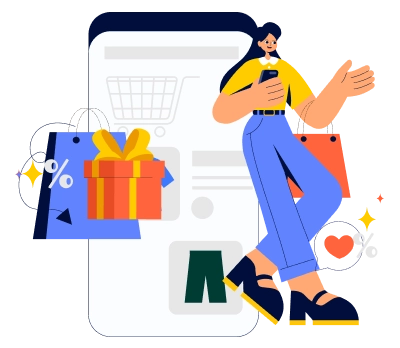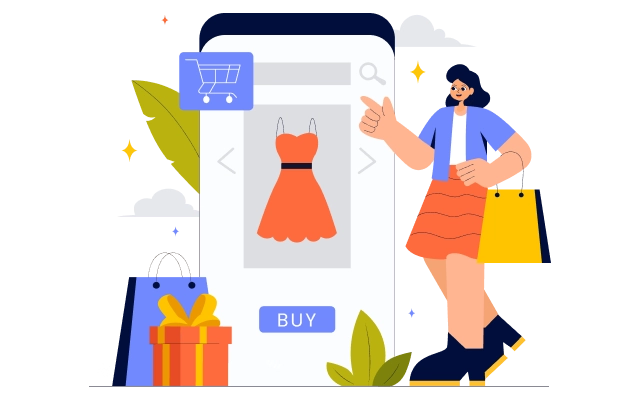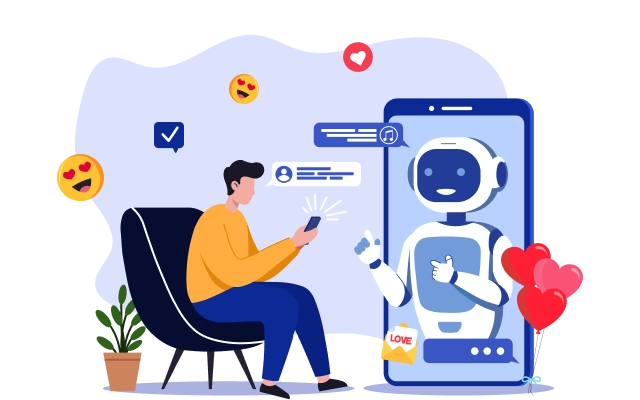Because of selling ultra-fashionable clothes for irresistibly cheaper rates, Shein has built their unique identity in the market. So, what is the secret behind its rise? Is it speed innovation in supply chains or data-driven marketing? Well, Shein's business model combines technology and trend-spotting like never before.
In this article, we peel back the layers of Shein’s revenue model, learn how it captures consumer attention, operates at scale, and generates billions in turnover. We’ll explore the technology behind its hyper-responsive supply chain, how its pricing strategy undercuts competitors, and why investors are watching its planned IPO closely. If you’ve ever wondered how Shein makes money, this is your backstage pass.
Shein's Revenue & Growth
Shein's financial story is one of Silicon Valley-style success:
- In 2023, the firm recorded a staggering $32.5 billion in revenue worldwide, a rise of around 43% from $22.7 billion in 2022.
- Its net profit hit some $2 billion compared to $700 million in the prior year.
- Supported by ferocious marketing and rock-bottom prices, Shein surpassed 238 million app downloads in 2023, making it the most‑downloaded fashion retail app that year.
Revenue by country indicates the U.S. as the most important market, with approximately 17 million active customers. With an IPO looming—estimated at a $50–$66 billion valuation—investors are positive, based primarily on Shein's rapid growth and profitability.
These figures are just the beginning. What truly makes the Shein “shine” is how it can create fashion with precision. They are giving just what people need, at exactly the right moment.
Fashion Tech Founders—This Is Your Moment
Whether you're planning a sustainable fashion brand or a budget shopping app, we offer white-label apps with dynamic pricing, real-time inventory, and more.

Exceptional Supply Chain - From Design to Doorstep in Less Than 14 Days
Shein isn't a clothing brand—it's a logistics business that happens to sell clothing. Here's how they transitioned from traditional seasonal drops to production cycles in real-time:
Micro-batch release
Shein develops 2,000–5,000 SKUs of new items every day, with each product being released in batches (sometimes only 50–100 units).
Reorder based on feedback
If a product is selling, the algorithm prompts a bigger production batch—if it doesn't, production ends, avoiding waste.
Lightning cycle
A design-to-doorstep process condensed to 7–14 days, as opposed to weeks or months for established rapid fashion movers like Zara and H&M.
Inventory turn
Shein manages to turnover its inventory every 30–40 days, considerably faster than the industry average of a few months.
Through outsourcing to closely integrated factories near Guangzhou and utilizing AI to control orders, Shein has greatly reduced lead times and reduced unsold inventory—reportedly maintaining wastage below 2%, whereas ~30% is the industry standard.
Basically, they don't make educated guesses about trends—they measure them by means of real-time consumer feedback, converting data into design. In the next section, we'll observe how they convert this agility into top-line growth.
How Shein Drives Revenue?
Shein's revenue model is not merely about flashy speed—it's founded on three pillars:
Low‑price scalability
Through releasing thousands of SKUs in micro-runs, Shein maintains ultra-low prices: usually 39–60% below H&M and Zara. This appeals to price-conscious consumers worldwide while holding decent margins.
Massive product variety
More than 100,000 new styles every year, across women's, men's, kids', homewares, electronics, and more options, equal more opportunities to strike a trend.
Intelligent marketing & technology
Information from app usage and social media is cycled back into design and recommendation algorithms, improving matches, clicks, and conversions. Now they even sell their supply-chain technology to other brands, generating new B2B revenue streams.
Added to VIP pricing, flash sales, influencer partnerships, and price localisation, Shein has established a business model that derives its success from volume, speed, and price sensitivity, clocking billions in turnover annually.
Shein's D2C Model: How They Are Owning the Customer Experience?
Behind Shein’s explosive growth, a key factor is its D2C model. While conventional fashion brands have high exposure to physical retail or third-party marketplaces, Shein covers the entire customer journey from its mobile application and website.
It allows the brand to maintain direct control over customer information, promotions, and prices. To better understand individual preferences, it also assists in gathering first-party data on wishlists, returns, shopping habits, and app usage. They also push notifications, SMS, and email to provide targeted marketing campaigns and tailored recommendations.
This is only feasible because Shein eliminates middlemen like physical stores and Amazon. Increased brand loyalty, better margins, and an ultra-targeted shopping experience were the results.
Shein cuts the inconvenience that most retailers face in dealing with third-party sellers or marketplaces by taking control of communications, logistics, and user experience. Mobile-first, price-sensitive markets such as India, Southeast Asia, and Latin America, in which convenience and loyalty go hand in hand, are best suited to this D2C model.
Shein illustrates to potential business owners that higher product-market fit and profitability can be attained by controlling the entire funnel, particularly in the fashion sector.
User Acquisition & Retention
Going out of the track, Shein does not follow the traditional brand tactic to do celebrity endorsements or billboard ads. They are heavily taking advantage of influencers, user-generated content, and trends. Because of this, they have built a youth-focused brand, which is also community driven, without the mainstream expense of a typical fashion advertising.
Some of the principal tactics are micro-influencer advertising on YouTube, TikTok, and Instagram. Influencers are given free clothing to create "Shein Hauls", there are millions of such videos out there. People share their referral rewards & coupons via WhatsApp, Telegram groups, and Instagram stories. Moreover, Shein’s flash sales & in-app countdown timers helps them create a sense of urgency, triggering impulse purchases.
The app itself is gamified, with spin-the-wheel rewards, check-in streaks, and loyalty points—copying mobile game engagement patterns. These elements draw consumers into a daily habit, creating app opens even when they're not going to actually buy.
This pushy emphasis on retention has resulted in one of the fashion e-commerce industries' highest engagement rates. As of 2024, Shein's app retention rate is approximately 33%—way above industry standards, particularly in the fast-fashion market.
Put simply, Shein doesn't merely sell clothes—it builds a digital lifestyle people want to come back to.
Shein’s Tech-First Mindset: How They Are Using Data & AI
While Shein is famous for its affordable, on-trend clothing and prices that cannot be beat, the true power behind the vehicle is data science. The company was founded by an SEO expert, and it continues to think like a tech startup.
Here's how Shein leverages technology to drive its business model:
Search trend forecasting
Shein examines keyword trends on Google, TikTok, and its own platform to forecast which trends will be popular weeks before they reach peak levels. This enables the brand to create and produce relevant merchandise in a short span of time.
Real-time feedback loop
Reviews from customers, reasons for returns, time spent on products, and wishlist actions are all input into an internal AI engine to decide what styles to promote, modify, or eliminate.
Dynamic pricing algorithms
Items are not merely priced by cost, but by instantaneous demand, competition, and user history. This maximizes profit margins as well as sales velocity.
Personalized home feeds
Just like Netflix or YouTube, Shein's app has implemented a filtering algorithm that recommends outfits based on user’s taste and shopping history. We can call it “hyper-personalization” that has resulted in larger cart sizes and reduced bounce rates.
By applying AI in supply chain, pricing, marketing, and design, Shein has become a data business that happens to sell clothes. This advantage allows it to be challenging for conventional retailers—who don't have this type of synchronization—to play catch-up.
Global Expansion Strategy: How Shein Localizes at Scale
Shein's success isn't only achieved through scale, it’s because of their scaling at international level - that too with localization. Unlike other international brands with a one-size-fits-all catalog, Shein customizes its products, marketing, and logistics based on the region.
Country-specific catalogs
The Shein app in the United States will have an entirely different front page than an app from India or Saudi Arabia. Each market gets curated styles, sizes, and promotions designed to appeal to local tastes.
Multilingual, multi-currency capability
Shein offers dozens of currencies and languages, taking the friction out for cross-border shoppers.
Local influencer marketing programs
Shein has ambassador and affiliate marketing programs based in specific geographies, developing campaigns that appeal to local cultural sensitivities.
Localized warehousing
Rather than shipping everything from China, Shein uses their regional centers in the U.S., Europe, and the Middle East to cut delivery times and fullfil the demand requirements.
Cultural adaptation
Throughout Ramadan, Diwali, or Christmas, Shein has themed collections, flash sales, and editorial content aligned with those groups. This makes the brand "local" in each market.
By combining centralized manufacture and design with decentralized localization activities, Shein has penetrated more than 150 markets with no one physical store.
Challenges & Controversies Surrounding Shein
Though its dizzying growth and innovation have not escaped attention, neither has Shein's. The same model that allows it to sell thousands of products daily and price them super-low also raises deep moral questions, particularly about sustainability, labor, and transparency.
Fast Fashion's Environmental Cost
Shein offers around 6,000+ new products each day, most of which are never reordered. This is adding to the already staggering eco-profile of the global fashion industry. Critics say Shein promotes a throwaway culture in which consumers over consume low-cost-made garments that are only made to exist for a short period of time.
Labor Practices Under Scrutiny
Investigative reports—like one by Channel 4 UK in 2022—have been accusing Shein factories of violating labor standards. The workers allegedly put in more than 75 hours a week with few days off, paid wages far below decent minimums. While Shein claimed to have begun audits and ethical improvements, its supply chain is still very opaque, especially given how fast and widespread its vendor network is.
Intellectual Property Issues
Shein has also been sued dozens of times for design theft. Small fashion brands and independent artists have accused the platform of stealing their designs and selling their versions at lower prices. With Shein's rapid speed to market, it's probably the case that design curation skimps on originality checks at times.
While Shein is investing in public CSR initiatives and has made promises to better its ways, most critics don't think the brand has come even halfway yet in order to be labeled ethical or sustainable.
What Startups & Entrepreneurs Can Learn from Shein?
Love it or loathe it, Shein's business model has a goldmine of learnings for startups, particularly those aspiring to create global D2C brands in the digital age.
1. Data is the New Fabric
Shein's dependence on user behavior, trend forecasting, and quick feedback loops demonstrates the importance of data for supply chain and product development decisions in addition to marketing. Make an early investment in gathering and judiciously utilizing data if you're developing an app-based or e-commerce company.
2. Speed to Market Wins
Regular brands take 6–9 months to bring a product from idea to shelf. Shein accomplishes it in less than 7 days. That is because of their flexible production alliances and AI-powered design systems. Startups need to reduce product development timeframes without lowering quality.
3. Digital-First Always Wins
Shein did not open a single store, yet it retails in over 150 countries. A mobile-first model with gamified UX, influencer growth, and feature-based retention results in a sticky brand experience. A reminder that your website/app is your true storefront.
4. Localization Fuels Expansion
Shein gives a masterclass in glocalization with its personalization by country. Be sensitive to local holidays, languages, currencies, and customs if you plan to scale across cities or even states. Hyper-local logistics and marketing can improve user trust and revenue significantly.
5. Monetize Beyond the Obvious
While product sales drive most of Shein's revenues, its enormous user base leaves space for affiliate marketing, cross-selling, and other advert models in the future. Clever startups can create multi-tiered monetization strategies that diverge from their staple offerings.
Launch Your Trendy Marketplace Today
Have a product idea and an audience in mind? With our ready-made solutions, you can go live in days, not months.
Conclusion
Shein is not just a fast-fashion brand. In our opinion, it is a data-driven commerce engine. It’s transforming the way contemporary retail operates. With a keen D2C approach, algorithm-driven trend forecasts, global scalability, and influencer marketing, it has surpassed traditional giants Zara and H&M in growth as well as digital supremacy.
However, there is a cost associated with success. Shein is under growing pressure to improve its practices after its sustainability, labor values, and transparency were all questioned. Shein is one of the most intriguing case studies in contemporary international trade because of this paradox—operational excellence with moral blind spots.
FAQ’s
1. What is Shein’s business model?
Shein follows a fast fashion, direct-to-consumer (DTC) model, using real-time manufacturing, data analytics, and a demand-driven supply chain to minimize costs and maximize speed.
2. How does Shein make money?
Shein makes money through high-volume, low-cost sales. Its profit model relies on agile supply chains, rapid design-to-production cycles, and online-only retail.
3. Is the app customizable to fit my brand identity?
Yes, definitely. Our solutions are fully customizable—allowing you to tailor the app’s design, features, and user experience to perfectly align with your brand identity and business goals.
4. What payment gateways can be integrated into the app?
Our apps support a variety of secure payment methods—from cards and wallets to UPI and local gateways—ensuring user convenience across regions.
5. What kind of support do you provide after the app is launched?
Absolutely. Our team stays with you after launch, offering proactive support, system updates, and feature upgrades to help your app grow with your business.











